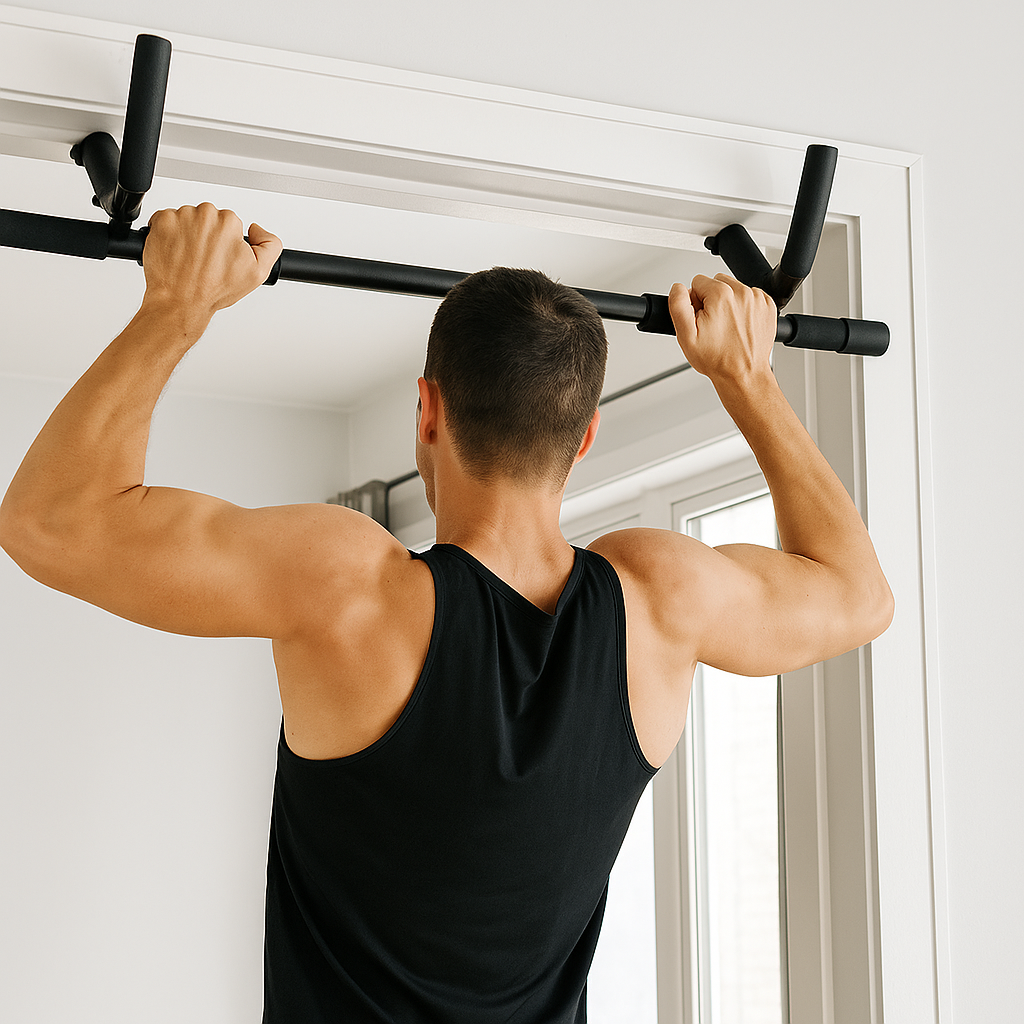
Upper Body Workouts Using Pull-Up Bars
When it comes to building a strong, defined upper body, few tools are as effective and versatile as the pull-up bar.
Whether installed in your doorway or set up in your home gym, this single piece of equipment can help you develop strength, stability, and endurance — all using just your body weight.
If you’re looking to elevate your fitness game, here’s how to create a complete upper body workout routine using pull-up bars and complementary tools from PrimeVita.
1. Why Pull-Up Bars Are Essential for Upper Body Strength
Pull-up bars are one of the most efficient ways to engage multiple muscle groups at once.
They challenge not just your arms and shoulders, but also your core, back, and grip — all vital for total upper-body conditioning.
• Full Muscular Engagement: Pull-ups activate the lats, biceps, shoulders, and even your abs for core stability.
• Minimal Equipment, Maximum Results: Ideal for home workouts or small spaces.
• Scalable Difficulty: You can modify the intensity for beginners or advanced athletes.
If you’re training at home, the Doorway Pull-Up Bars from PrimeVita provide a secure, sturdy base for progressive bodyweight training.
2. Target Muscles in Upper Body Pull-Up Training
Pull-up workouts target more than just your arms.
Each grip variation and angle recruits different muscle fibers:
• Wide Grip Pull-Ups: Focus on the lats and upper back.
• Chin-Ups (Underhand Grip): Emphasize biceps and forearms.
• Neutral Grip Pull-Ups: Balanced engagement of shoulders and arms.
• Hanging Leg Raises: Strengthen your core while maintaining upper body tension.
To improve comfort and stability during these exercises, pair your pull-up routine with Fitness Gloves & Grip Pads — they reduce slippage and protect your palms during intense sets.
3. Core Upper Body Pull-Up Exercises
Here are some of the best pull-up bar exercises for building a complete upper body routine:
• Standard Pull-Up
The foundation movement — focus on slow, controlled reps.
Engages the lats, traps, shoulders, and core.
• Chin-Up
An excellent alternative for bicep activation.
Keep your elbows close to the body and pull with your arms and back together.
• Negative Pull-Up (for Beginners)
Jump or step to the top of the bar, then lower yourself slowly for 3–5 seconds.
This builds strength for a full pull-up.
• Hanging Knee Raise
Hold the bar and lift your knees toward your chest.
Perfect for adding core engagement to your routine.
• L-Sit Hold
Lift and hold your legs straight in front while hanging — a challenging move that strengthens the entire core.
If you’re still building strength, use Resistance Bands & Loop Sets to assist your pull-ups and maintain correct form.
4. Structuring Your Weekly Pull-Up Routine
Consistency is key.
Here’s a sample upper-body plan you can follow:
Beginner Routine (3 days/week)
• 3 sets of assisted pull-ups
• 3 sets of chin-ups
• 3 sets of hanging knee raises
Intermediate Routine (4–5 days/week)
• 4 sets of standard pull-ups
• 3 sets of wide-grip pull-ups
• 3 sets of L-sit holds or leg raises
• Finish with 3 sets of negative pull-ups
Rest at least 60–90 seconds between sets, and focus on controlled movements rather than high volume.
This approach maximizes muscle growth while minimizing joint strain.
5. Recovery & Mobility After Pull-Up Workouts
Recovery is where progress happens.
Tight shoulders, lats, or forearms can limit your form and cause fatigue — that’s why post-workout care is essential.
• Use Foam Rollers & Massage Balls to release muscle tension in your shoulders and back.
• Stretch your biceps and chest to restore balance after pulling movements.
• Apply gentle pressure to sore areas to boost circulation and prevent stiffness.
Combining strength and recovery ensures long-term performance and injury prevention — a true hallmark of smart training.
6. Expert FAQs: Pull-Up Bar Training
Q1. Can beginners start pull-up bar workouts?
Absolutely. Start with assisted pull-ups using resistance bands and build up gradually.
Q2. How often should I train?
3–5 days a week is ideal. Allow rest days for recovery and muscle growth.
Q3. What if I can’t do a full pull-up yet?
Focus on negative pull-ups and band-assisted versions. Strength develops faster than you think.
Q4. Can pull-ups replace other upper-body exercises?
They can form your foundation, but pairing them with push movements (like dips or push-ups) keeps your routine balanced.
💪 Conclusion: One Bar, Endless Possibilities
The pull-up bar is more than just a piece of metal — it’s a gateway to building real, functional strength.
Whether you’re working out at home or in the gym, consistent pull-up training sculpts your upper body, improves posture, and enhances overall performance.
Start simple, stay consistent, and support your progress with the right recovery tools from PrimeVita — because true strength is built one rep at a time.


